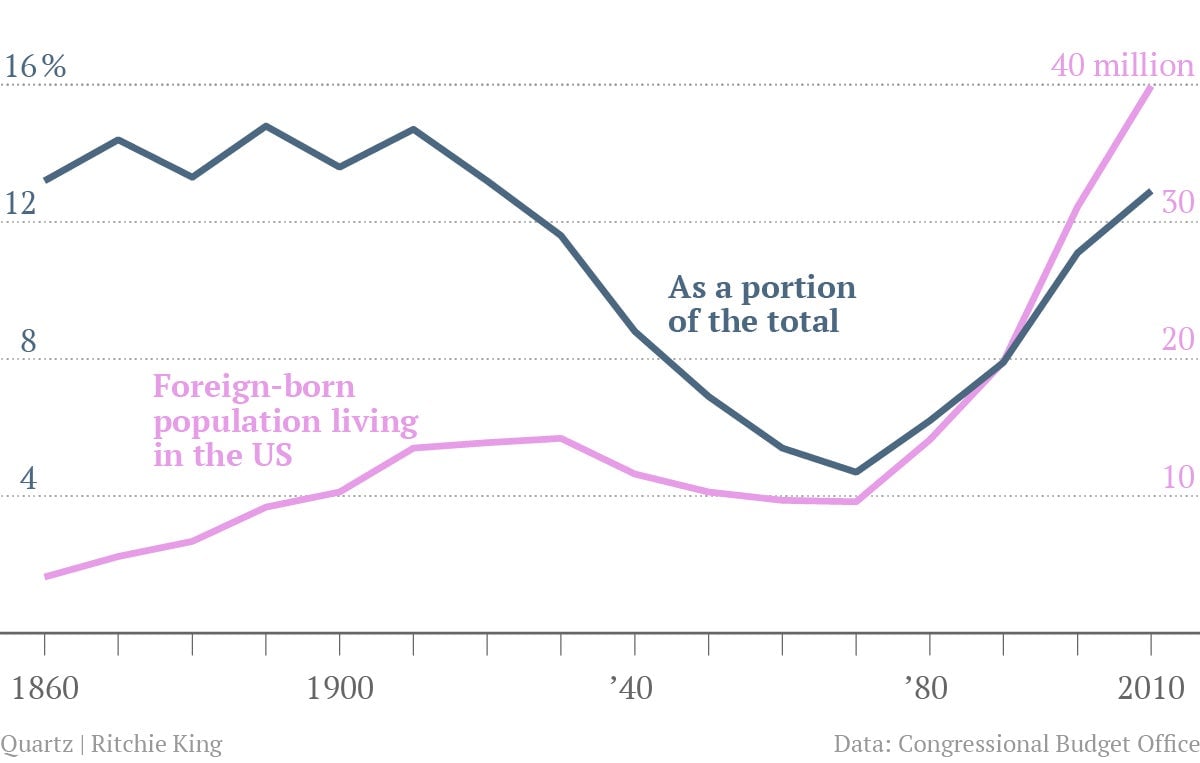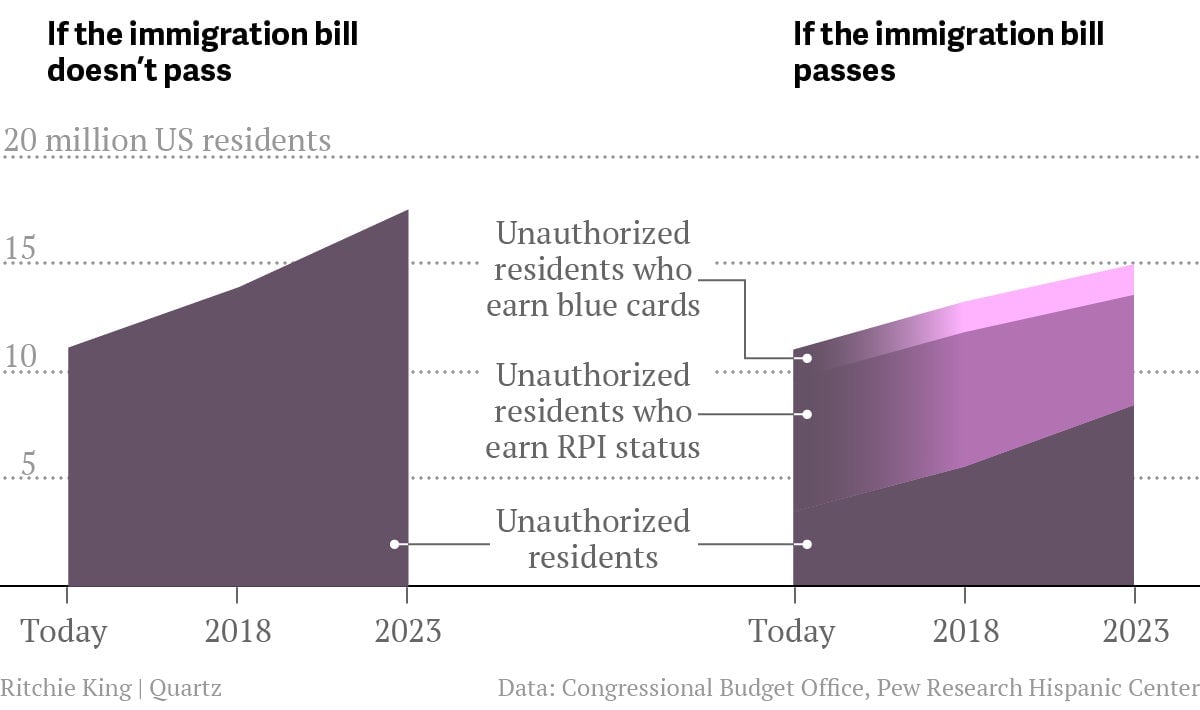What America will look like with immigration reform—and without it
From 1860 to 1910, the share of foreign-born US residents was between 13% and 15% as foreigners flooded to the young country with the booming economy. It fell to less than 5% by 1970. It’s been on the rise since, with today’s population of foreign-born Americans hitting 40 million and 13%.

The share of foreign-born US residents is already returning to historic highs

From 1860 to 1910, the share of foreign-born US residents was between 13% and 15% as foreigners flooded to the young country with the booming economy. It fell to less than 5% by 1970. It’s been on the rise since, with today’s population of foreign-born Americans hitting 40 million and 13%.
About half of them are citizens, a quarter are in the country legally, and the remaining quarter, illegally. Under the immigration bill, many of those would gain legal status, but the bill would also bring another 10.4 million to the US over the next decade.
That would mean more than doubling the rate of immigration over the decade (though it would slow afterwards). The Congressional Budget Office (CBO) projects that without an immigration bill, the US population will increase by a little les than 10 million immigrants between now and 2023, for a total population of US 354 million, 14.1% of whom are foreign-born. With the bill, the US will add 20 million immigrants to project a 2013 population of 364 million, with about 16.5% foreign-born. But a higher proportion of immigrants would be legal residents than today.

The CBO estimated the population effects as part of its effort to measure how immigration reform would affect the economy. The bill’s biggest single effect would be to clear a backlog of people waiting for visas, most of whom are the relatives of people who are already permanent residents.
Here’s what happens to unauthorized residents

So what happens to the 11.1 million unauthorized residents of the US? Many will be able to get on a path to citizenship that gives them legal status as registered provisional immigrants (RPI) while they wait for the naturalization backlog to clear and pay various fines and fees. Farm workers can apply for a “blue card” that would give them legal status as agricultural workers for eight years.
The bill also includes better border security measures and more stringent checks on workers’ documents, which should reduce the inflow of illegal immigration by about 25%. Working backwards from the CBO’s estimates, we can calculate that without the bill 6.8 million unauthorized immigrants will enter the US over the next decade; with the bill that will fall to 4.8 million. For comparison purposes, the CBO’s most-recently released estimate (pdf) of unauthorized immigrants expects 375,000 to enter the US in 2020. If that number were reduced by a quarter to 281,000, that’s a fairly small unauthorized inflow for a populous country, especially if many are merely over-staying visas rather than sneaking across the Rio Grande. And it’s a fifth of the 1.4 million unauthorized immigrants expected to enter the US next year if nothing is done.